The Power of Video storytelling to elevate your saas marketing and forge deeper connections with your audience.Through captivating narratives, authentic testimonials, and targeted outreach, you can build trust, enhance brand affinity, and drive conversions like never before.
Get ready to elevate your brand, showcase your expertise, and transform the way you engage with your target audience through the magic of video storytelling. Let's unlock new possibilities and chart a course towards SaaS success together!
Showcasing the People Behind the Platform

Your potential customers want to know who they're doing business with. saas video storytelling that puts faces to names, highlighting the individuals behind the platform, can build a powerful sense of connection. People relate to people, and demonstrating the passion, expertise, and dedication of your team through video content humanizes your brand and builds trust.
Things to Plan:
- Team Member Spotlights: Create short videos introducing key team members, their roles, and what they bring to the company.
- Behind-the-Scenes Interviews: Film informal interviews with developers, designers, and support staff discussing their work and how they contribute to the customer experience.
- ""A Day in the Life"" Videos: Showcase the culture and daily activities of your team, giving potential customers a glimpse into your work environment.
Your Company's Mission and Principles.


SaaS businesses often have core values that drive their operations. Video can be a compelling medium for communicating these values to your audience, forging a stronger bond that goes beyond the features and benefits of your product. When your content demonstrates a shared commitment to sustainability, diversity, or community involvement, for example, it can resonate with customers who share those values.
Things to Plan:
- Mission Statement Video: Create a short, impactful video that visually communicates your company's mission and how it impacts customers.
- Value-Driven Stories: Produce storytelling videos that illustrate your commitment to your core principles through real-world examples or employee stories.
- Partnerships and Initiatives: Feature videos about your partnerships with non-profits or your participation in community initiatives that align with your values.
Sharing Your Brand's Origin Story
Origin stories add a human touch to SaaS businesses. They create an emotional connection by allowing your audience to understand the ""why"" behind your product and the journey that led to its creation. By showcasing early struggles, moments of inspiration, and the evolution of your vision through compelling video content, you invite viewers to become a part of your story.
Things to Plan:
- Founder Story Video: Capture the founder's journey, vision, and the challenges they faced while developing the initial SaaS concept.
- Timeline of Milestones: Create a visual storytelling video showcasing major achievements, partnerships, and product updates throughout your company's history.

- Then and Now Video: Contrast your early days with your current success to demonstrate the impact your SaaS solution has had and its growth potential.
Behind-the-Scenes Glimpses
Building trust is essential in SaaS, where customers are entrusting you with vital business functions. By using video to offer a behind-the-scenes look at your company culture, you provide a sense of transparency and authenticity. This can build confidence and show potential customers the human side of your business.
Things to Plan:
- Office Tour Video: Give a virtual tour of your workspace, highlighting the atmosphere, team interactions, and work environment.
- Company Event Highlights: Capture moments from team building events, celebrations, or conferences to showcase your culture and values in action.
- Employee Spotlight Q&As: Feature casual interviews with employees across various departments to offer diverse perspectives on what it's like to work at your company.
Weaving Humor and Relatability into Your Videos

While professionalism is important in the SaaS world, it doesn't mean your video content needs to be dry and serious. Incorporating humor and relatable scenarios can help your brand stand out and leave a lasting impression. A lighthearted approach can build rapport and make complex SaaS concepts more digestible and engaging.
Things to Plan:
- Humorous Explainer Videos: Use animation or creative scenarios to explain SaaS features or concepts in a funny and memorable way.
- Relatable Customer Stories: Showcase how your SaaS solution solves common everyday frustrations or pain points that many users experience.
- Blooper Reels or Outtakes: Add a human touch by sharing fun, lighthearted outtakes from behind-the-scenes of your video shoots.
Understanding the Specific Pain Points and Challenges Faced by Each Persona.
Effective SaaS video marketing relies on knowing your audience. Understanding the unique pain points and challenges faced by different buyer personas allows you to create targeted video content that directly addresses their specific needs. This resonates far more deeply than generic storytelling, demonstrating your genuine understanding of their issues.
Things to Plan:
- Persona Research: Conduct thorough research (surveys, interviews, data analysis) to define clear buyer personas for your SaaS product.
- Pain Point Mapping: Identify the key challenges and frustrations each persona experiences in relation to your SaaS solution's domain.
- Content Brainstorming: Generate video ideas that directly address the pain points identified for each persona, showcasing your SaaS solution as a relevant solution.
Identifying the Preferred Video Consumption Habits and Platforms for Each Target Audience.
Your meticulously crafted SaaS video content will fall flat if it isn't delivered where your target audience is actually consuming media. Understanding the preferred video platforms and viewing habits of each persona is crucial. Do they favor LinkedIn for professional content, or YouTube for tutorials? Do they consume short-form videos on mobile, or prefer longer content on desktop?
Things to Plan:
- Platform Analysis: Analyze the demographics and usage patterns of various video platforms to determine where each persona is most active.
- Video Length Optimization: Tailor your video length to the viewing preferences of each platform and persona (e.g., shorter for social media, longer for in-depth demos).
- Format Considerations: Choose video formats (e.g., landscape, vertical, square) that align with the viewing habits on each platform.
Crafting Unique Messaging and Visual Styles to Resonate with Different Demographic and Psychographic Segments.

Beyond pain points, different personas have different priorities, communication styles, and visual preferences. To effectively connect, your SaaS video content should adapt its messaging and visual tone to resonate with each segment. A startup founder might be attracted to fast-paced, energetic videos focusing on innovation, while a corporate executive may prefer data-driven storytelling that highlights ROI and security.
Things to Plan:
- Tone and Voice Guide: Develop specific tone and voice guidelines for each persona, influencing the language, visuals, and music used in their respective videos.
- Visual Style Boards: Create mood boards or style guides for each persona to ensure the visuals, color palettes, and imagery align with their aesthetic preferences.
- Messaging Framework: Develop distinct messaging frameworks for each persona, tailored to their motivations, aspirations, and preferred communication style.
Tailoring Calls to Action to Align with the Goals and Motivations of Each Persona.
A strong call to action (CTA) is essential for converting video viewers into leads or customers. To maximize effectiveness, CTAs in SaaS video marketing should be tailored to each persona's specific goals and motivations. For instance, a persona seeking a free trial might be driven by a Start your free trial today CTA, whereas a persona in the consideration phase might benefit from a Download our whitepaper or Request a demo CTA.
Things to Plan:
- Goal Alignment: Clearly define the desired action you want each persona to take after watching the video (e.g., demo request, sign up, download).
- CTA Button Customization: Design and write CTA button copy that specifically addresses the needs and motivations of each persona.
- Landing Page Optimization: Create dedicated landing pages tailored to each CTA and persona, providing relevant information and reinforcing the desired action.
Utilizing Data and Analytics to Refine Your Video Strategy Based on Audience Engagement.
Data plays a critical role in optimizing your SaaS video marketing strategy. Tracking video analytics such as watch time, click-through rates, and conversion rates can provide valuable insights into how your video content is resonating with each persona. By analyzing this data, you can understand which storytelling approaches are working best and refine your strategy to improve engagement and conversion rates across the SaaS product funnel.
Things to Plan:
- Analytics Dashboard Setup: Establish a robust analytics dashboard to monitor key video metrics like view count, completion rate, click-through rate, and conversions.
- A/B Testing: Experiment with different video titles, thumbnails, CTAs, and content variations to identify which elements drive better performance for each persona.
- Regular Performance Reviews: Regularly review your video analytics to understand trends, identify areas for improvement, and optimize your future SaaS video storytelling strategy.
Different Types of Video Storytelling Formats Applicable to SaaS

Simplifying Complex Features Through Engaging Animations and Clear Narrations.
SaaS products often involve complex features that can be challenging to explain concisely. Explainer videos, which frequently utilize animation and clear narrations, can effectively break down complex concepts into easy-to-understand formats. By simplifying technical jargon and visually showcasing the value proposition of specific features through compelling video content, you can engage a wider audience and move them further down your sales funnel.
Things to Plan:
- Storyboarding: Develop a detailed storyboard to visually plan the flow of the explainer video, incorporating animations and key messaging points.
- Scriptwriting: Write a concise and engaging script that avoids technical jargon and explains the feature's benefit in layman's terms.
- Animation Style: Choose an animation style that aligns with your brand and target audience (e.g., 2D animation, whiteboard animation, motion graphics).
- Voiceover Selection: Select a professional voiceover artist who can clearly and effectively communicate your message.
Building Social Proof by Featuring Real Customers Sharing Positive Experiences.
Customer testimonial videos offer a powerful form of social proof for SaaS businesses. When potential customers see real people sharing their positive experiences with your product, it builds trust and credibility. By capturing authentic customer stories through video, highlighting their challenges and the solutions provided by your SaaS, you can significantly boost your conversion rates, especially for prospects nearing the decision stage.
Things to Plan:
- Customer Selection: Identify customers who have achieved significant success with your SaaS solution and are willing to share their stories on video.
- Interview Questions: Prepare insightful interview questions that elicit authentic and compelling feedback, focusing on specific benefits and outcomes.
- Video Production: Professionally produce the video, including high-quality visuals and editing that emphasizes the emotional impact of the customer's experience.
- Video Promotion: Strategically promote the testimonial video across relevant marketing channels, including your website, social media, and email campaigns.
Showcasing the value proposition and Functionality of Your SaaS Solution in Action.
Product demo videos provide a valuable opportunity to demonstrate the tangible value of your SaaS solution to potential customers. Rather than simply describing features, a well-crafted demo video showcases the software's interface and functionality in action. By incorporating engaging storytelling, highlighting user-friendly workflows and demonstrating how your product solves specific customer pain points, you can effectively convince viewers to explore further.
Things to Plan:
- Demo Script & Flow: Outline the key features and functionalities you want to showcase in the demo, focusing on user-friendliness and benefits.
- Screen Recording Software: Use professional screen recording software to capture high-quality visuals of your SaaS interface.
- Voiceover/On-screen Narration: Provide clear and concise explanations during the demo, highlighting key features and workflows.
- Demo Customization: Consider creating different demo variations for various buyer personas, tailoring the content to their specific needs and interests.
Establishing Expertise by Featuring Industry Leaders Discussing Relevant Trends and Insights.
Thought leadership videos position your SaaS brand as an industry authority. By featuring interviews with industry experts or internal thought leaders discussing relevant trends, challenges, and insights, you can attract and engage potential customers actively seeking valuable knowledge. High-quality thought leadership video content elevates your brand beyond simply being a product provider, establishing it as a trusted resource and go-to source for industry expertise.
Things to Plan:
- Expert Identification: Identify key figures in your industry who align with your brand values and possess expertise that is relevant to your target audience.
- Interview Preparation: Develop thoughtful questions that delve into insightful topics, trends, and challenges related to your SaaS niche.
- Professional Production: Create a visually appealing interview format, using professional lighting, sound, and editing techniques to ensure a high-quality production.
- Content Promotion: Share and promote the interview videos across your social media channels, blog, website, and relevant industry publications.
Visualizing the Success Achieved by Customers Through Compelling Data and Graphics.
Animated case study videos are a compelling way to showcase the tangible benefits and impact your SaaS solution has delivered to other businesses. By visualizing customer success stories through animation, data visualizations, and engaging graphics, you can captivate viewers and convey key achievements in a clear and memorable manner. This format excels in showcasing complex data and illustrating quantifiable results in an accessible way, helping to overcome the inherent challenges of portraying the impact of intangible SaaS solutions.
Things to Plan:
- Case Study Selection: Choose successful customer stories with strong quantifiable data that align with the target audience's goals and challenges.
- Script & Storyboard Development: Craft a compelling narrative highlighting the customer's initial challenge, the solution your SaaS offered, and the positive outcomes achieved.
- Animation Style & Data Visualization: Choose appropriate animation styles and data visualization techniques to make the complex data easily understandable and engaging.
- Music & Voiceover: Incorporate a compelling soundtrack and professional voiceover narration to enhance the emotional impact and clarity of the case study's message.
Clearly Establishing the Problem Your SaaS Solution Addresses and Introducing the Hero (Your Customer).

The foundation of compelling SaaS storytelling is establishing a relatable problem. Just as a good movie needs a compelling antagonist, your video content should clearly depict the challenges and pain points your target audience faces. This sets the stage for your SaaS solution to emerge as the hero, offering a solution that resonates with the viewer's experience. By effectively framing the problem and highlighting its negative impact, you generate engagement and anticipation for the resolution.
Things to Plan:
- Customer Research: Deeply understand the problems your target audience faces and the frustrations they experience within the context of your SaaS solution.
- Problem Visualization: Brainstorm creative ways to visually depict the problem through relatable scenarios or metaphors in your video.
- Character Introduction: If using a narrative approach, introduce your customer as the ""hero"" of the story, showcasing their struggles and making them relatable to the audience.
- Emphasizing the Impact: Clearly highlight the negative consequences of the problem and how it hinders the customer's progress or success.
Showcasing the Challenges Faced by the Customer and Their Search for a Solution.
Once you've established the core problem, your SaaS video storytelling needs to create a sense of escalating challenge. Show the hero's journey in seeking solutions, highlight their initial attempts, and perhaps the struggles or limitations they encounter with other methods. By depicting these obstacles and frustration, you build suspense and reinforce the importance of a robust solution. This intensifies the viewer's anticipation for the moment your SaaS product comes to the rescue.
Things to Plan:
- Obstacle Creation: Identify common challenges and obstacles encountered when searching for a solution like yours, relating them to your customer's journey.
- Solution Exploration: Show the customer experimenting with alternative methods or less effective tools to address the problem.
- Visual Progression: Employ visuals to signify escalating difficulty or frustration as the hero attempts to overcome the problem without the optimal solution.
Presenting Your SaaS Solution as the Key to Overcoming Obstacles and Achieving Desired Outcomes.

The climax of your SaaS story is where your product takes center stage. It's the moment of resolution, the turning point where the hero finally discovers the key to overcoming their challenges. In your video, this involves seamlessly introducing your SaaS solution, clearly showcasing its key features and how they directly address the pain points previously established. It's not simply about presenting the product; it's about portraying it as the essential tool that enables success and delivers positive transformation.
Things to Plan:
- Feature Integration: Highlight the key features of your SaaS solution that specifically address the customer's pain points and solve their core problem.
- Benefits Emphasis: Demonstrate how these features translate into tangible benefits and positive outcomes for the customer (e.g., time saved, efficiency improved, costs reduced).
- User-Interface Showcase: Provide brief glimpses of the user interface, highlighting its ease of use and demonstrating how the solution works in practice.
Demonstrating the Tangible Benefits and Positive Impact of Your Solution on the Customer's Business.
Following the introduction of your SaaS solution, it's essential to illustrate the tangible positive impact it has on the customer's business. Show the improvements they experience, whether it's increased efficiency, reduced costs, streamlined workflows, or boosted revenue. Using data visualizations, testimonials, or specific examples to highlight the value and tangible results achieved can significantly strengthen the appeal of your SaaS video storytelling. This demonstrates that your product is not just a theoretical solution, but a powerful driver of positive change.
Things to Plan:
- Quantifiable Data: Incorporate relevant metrics and data points that showcase the measurable improvements experienced after adopting the SaaS solution.
- Success Metrics Showcase: Highlight how the customer tracked their progress and the positive changes reflected in key performance indicators.
- Customer Journey Visualization: Use graphics or animation to visualize the customer's improved journey and positive transformation after implementing your SaaS solution.
Reinforcing the Customer's Success and Encouraging Viewers to Take the Next Step.
The resolution of your SaaS video story provides closure and inspires action. It's the final scene where the hero celebrates their victory, achieving their goals with the help of your product. This part of your video needs to confidently restate the positive outcomes achieved, leaving a lasting impression on the viewer. Conclude with a strong call to action (CTA) that guides viewers to take the next step in their own journey, whether it's visiting your website, requesting a demo, or signing up for a trial.
Things to Plan:
- Testimonial Reinforcement: Consider including a concluding statement from the customer, solidifying the success story and reinforcing the positive impact of your SaaS.
- Future Vision: Offer a glimpse of future possibilities and potential further benefits that continued use of your SaaS solution can provide.
- Compelling CTA: End the video with a clear and persuasive CTA that directs viewers towards engaging with your brand further and exploring your product in greater depth.
Tips for Writing Clear, Concise, and Engaging Scripts

Capturing Viewer Attention Immediately with a Compelling Opening Line or Visual.
In the competitive world of online video, grabbing the viewer's attention within the first few seconds is critical. Effective SaaS storytelling scripts start with a compelling hook that either visually or verbally captivates the audience. It could be a striking image, a thought-provoking question, or a shocking statistic related to the pain point you address. The hook's purpose is to stop the scroll and encourage viewers to invest their time in your SaaS video content.
Things to Plan:
- Brainstorming Engaging Hooks: Explore various options like starting with a relatable problem statement, a surprising statistic, a customer testimonial quote, or a visually stunning opening shot.
- Target Audience Considerations: Choose a hook that will resonate most effectively with your specific target audience and their needs or interests.
- A/B Testing Different Hooks: Experiment with multiple hook variations to identify which approach generates the best viewer engagement and retention in the first few seconds of your video.
Using Conversational Language and Avoiding Industry Jargon.
While your SaaS product may be complex, your video scripts should never be. The key to effective communication is clarity, and using clear, conversational language helps ensure your audience understands the value of your solution. Avoid overly technical terms or industry jargon that could alienate or confuse viewers unfamiliar with the specific nuances of your field. Aim to explain concepts simply, just as you would in a conversation with a friend or colleague who is not necessarily an expert in your domain.
Things to Plan:
- Target Audience Language: Tailor your language to match the vocabulary and understanding of your intended audience, avoiding technical terms they might not be familiar with.
- Readability Testing: Test your script for clarity by using readability tools or simply by having someone outside your immediate team review it for understanding.
- Sentence Structure & Word Choice: Employ shorter sentences, simpler word choices, and active voice to improve readability and clarity.
Highlighting the value proposition and Positive Outcomes for Customers.
While your SaaS product may have an impressive list of features, customers are ultimately concerned with how those features translate into real-world benefits. When writing your video script, focus on demonstrating the value proposition of your solution and highlighting the positive outcomes it can deliver. Instead of simply listing functionalities, translate those functionalities into specific customer benefits. Explain how your product can save users time, improve their efficiency, increase their revenue, or simplify their operations.
Things to Plan:
- Benefit-Driven Language: Frame your script around how your SaaS features address customer pain points and improve their situation. Use language like Save time, Improve efficiency,"" ""Reduce costs, or Boost revenue.
- Outcome Focus: Instead of saying, Our platform has advanced analytics, say, Gain insights to make better business decisions with our powerful analytics dashboard.
- Quantifiable Results: Wherever possible, incorporate specific examples of how your product has helped other customers achieve quantifiable positive outcomes.
Providing Direction for Visuals and B-Roll Footage to Enhance the Narrative.
While a strong script is crucial, your SaaS video storytelling is more engaging when you think visually. Your script should be a blueprint that also incorporates directions for visuals, ensuring a compelling and memorable experience. Include suggestions for visuals, graphics, B-roll footage, or animations that illustrate your message.
Things to Plan:
- Scene-by-Scene Visualization: Imagine each part of your script as a visual scene, providing descriptive notes to your production team or video editor about the imagery or animations that would best enhance that particular moment.
- B-Roll Footage Direction: Suggest relevant B-roll shots that illustrate your key messaging points or that add visual depth to the overall narrative.
- Visual Storytelling Aids: Explore using infographics, graphs, charts, or screen recordings to make data and statistics more engaging and visually accessible.
Respecting Viewer Time by Delivering Your Message Effectively.
In today's fast-paced digital world, audience attention spans are shorter than ever. Keep your SaaS video scripts concise and to the point. Get to your key message quickly, explain your value proposition efficiently, and deliver a strong call to action. Every second counts in maintaining engagement and ensuring your audience walks away with a clear understanding of your SaaS solution's benefits.
Things to Plan:
- Key Message Focus: Before you start writing, clearly identify the core message you want to communicate in the video and ensure that every sentence aligns with that objective.
- Script Length Targets: Establish target lengths for different types of videos (e.g., keep explainer videos under 2 minutes, customer testimonials under 3 minutes).
- Editing & Revision for Conciseness: Review and edit your script meticulously, removing unnecessary phrases, redundancy, and any elements that don't directly contribute to the core message.
Identifying Customers with Compelling Stories that Demonstrate Measurable Results.
Turning customer success stories into impactful SaaS video content begins with finding the right stories to tell. Look for customers who have not only achieved positive results but who are also articulate and passionate about their experience. Select stories that clearly demonstrate a problem-solution narrative, where the customer's challenges, your SaaS solution, and the subsequent positive outcomes are all vividly illustrated. Seek those whose achievements can be backed up with quantifiable data to make the success stories even more convincing.
Things to Plan:
- Customer Success Tracking: Implement systems to track customer achievements and identify those who have made significant progress using your SaaS.
- Data-Driven Selection: Look for customer success stories that are supported by compelling metrics and quantifiable data.
- Customer Interview Pre-screening: Conduct brief interviews or questionnaires to identify customers who are comfortable sharing their story on video and can articulate their experience clearly.
Developing Interview Questions That Elicit Authentic and Emotionally Resonant Responses.
When crafting interview questions for customer success videos, it's crucial to evoke authentic and emotional responses. Focus on open-ended questions that encourage the customer to share their personal experience, thoughts, and feelings about using your SaaS solution. Avoid simply prompting for feature reviews. Instead, dig deeper into how the product has impacted their lives or their businesses, eliciting stories of how your SaaS made a real difference.
Things to Plan:
- Problem-Solution Framing: Design your questions to elicit responses that clearly demonstrate the initial challenges the customer faced and how your SaaS helped them overcome them.
- Emotional Exploration: Incorporate questions that tap into emotions by asking about frustrations, moments of breakthrough, feelings of relief or accomplishment achieved through using the solution.
- Follow-Up Probes: Prepare a list of potential follow-up questions to dig deeper into specific details and to uncover moments of emotional resonance during the interview.
Weaving Customer Quotes and Testimonials Throughout the Video to Enhance Credibility.

When producing your customer success video, seamlessly incorporate powerful customer quotes and testimonials throughout the narrative. Strategically chosen snippets of their direct feedback can have a significant impact on credibility. Rather than having the entire video be a continuous interview, you can weave in impactful customer quotes over B-roll footage that illustrates the story being told. This enhances the storytelling element while further emphasizing the authenticity and positive impact of your SaaS.
Things to Plan:
- Quote Identification: Carefully review the customer's interview transcript and select powerful quotes that resonate with your key messaging points and capture the essence of their success story.
- Visual Quote Integration: Explore visually integrating text overlays with customer quotes on relevant footage to emphasize key moments and insights.
- Quote Variety: Use a mix of short and impactful quotes, longer excerpts, and potentially even on-screen text overlays to add dynamic storytelling to your customer success video.
Using Visuals to Showcase the Customer's Journey and Highlight Key Achievements.
Visual storytelling plays a vital role in enhancing the impact of your customer success video. Consider how visuals can illustrate the customer's journey from their initial challenges to their ultimate triumph with your SaaS. You can showcase their environment, demonstrate the product's key features they utilized, or even employ graphics to depict quantifiable data and growth. Carefully selecting and implementing impactful visuals helps your audience connect emotionally and better grasp the scale of the success achieved.
Things to Plan:
- B-Roll Footage Selection: Plan shots that visualize the customer's daily life, workplace, or the specific tasks related to your SaaS that have been positively impacted by the solution.
- Data Visualization: Explore ways to graphically represent key success metrics (e.g., growth in sales, reduction in cost, improved customer retention rates) through charts, graphs, or animations.
- Before & After Comparison: If possible, showcase a before and after contrast that visually demonstrates the improvement or transformation achieved by the customer.
Creating a Call to Action That Encourages Viewers to Learn More or Explore Your Solution.

Every compelling SaaS video should conclude with a clear and strategically crafted call to action (CTA). For customer success stories, the CTA should encourage viewers to delve deeper into your solution and discover how it can achieve similar outcomes for their businesses. Guide them toward learning more by directing them to your website, signing up for a free trial, or requesting a personalized demo. A well-defined CTA can transform viewers who are initially drawn to the inspirational stories into qualified leads at the crucial bottom-of-the-funnel stage.
Things to Plan:
- CTA Button Optimization: Include a visually prominent CTA button within the video itself, strategically timed for maximum impact.
- Verbal CTA Reinforcement: Include a verbal CTA at the end of the video that reinforces the desired action, outlining clear next steps for viewers.
- Targeted Landing Pages: Create dedicated landing pages tailored to your CTA, ensuring a seamless transition from the video and providing relevant information for those who follow through.
Leveraging Storytelling Techniques to Connect with Viewers on a Deeper, Emotional Level.
In a market saturated with features and functionalities, building an emotional connection through your SaaS video storytelling is essential. By leveraging proven storytelling techniques like narrative structure, character development, and conflict resolution, you can tap into viewers' emotions and create a more impactful experience. Evoking empathy, excitement, or a sense of achievement through compelling storytelling fosters a deeper bond that goes beyond a simple product explanation.
Things to Plan:
- Empathy Mapping: Explore techniques like empathy mapping to thoroughly understand your target audience's needs, hopes, and frustrations, tailoring your storytelling to reflect their emotional journeys.
- Story Arc Definition: Structure your videos with a clear narrative arc: problem-solution-resolution, building suspense and driving emotional engagement.
- Human-Centered Stories: Craft storylines that feature relatable characters who your target audience can readily connect with on a human level.
Using Music and Sound Design to Enhance the Emotional Impact of Your Videos.
Carefully chosen music and sound design have a profound impact on the emotional tone and impact of your SaaS videos. By selecting the appropriate soundtrack that reflects and supports the story's emotional progression, you can effectively reinforce a sense of joy, excitement, empathy, or even urgency. The sound elements are a powerful, often underestimated aspect of crafting compelling video content.
Things to Plan:
- Mood and Tone Setting: Create playlists with music tracks representing different emotional tones (upbeat, inspiring, calm, serious), matching music choices to the storyline and mood of each specific video segment.
- Music Licensing: Research and secure appropriate licenses for the music you want to use in your videos, ensuring you are complying with copyright regulations.
- Sound Effects & Ambient Sound: Use well-placed sound effects to punctuate key moments in the video, enhance a sense of realism, or underscore specific messages.
Showcasing Authentic Customer Emotions to Foster Empathy and Build Stronger Connections.
When presenting customer stories in your SaaS videos, it's invaluable to capture and highlight the authentic emotions your clients experience while using your solution. Letting them share genuine moments of frustration, joy, relief, or excitement can deeply resonate with your viewers, fostering a stronger connection and build trust. Potential customers will identify with these real human experiences, leading to increased brand affinity and a sense of community.
Things to Plan:
- Interview Preparation: During customer interviews, focus on eliciting their authentic emotional responses to specific situations related to the use of your product.
- Close-Ups and Body Language: Pay attention to visual cues, including facial expressions and body language, capturing those that add genuine emotional context to the video.
- Raw Footage Selectivity: Choose the segments where emotions are most palpable to include in the final edit, enhancing the impact of customer testimonials and building empathy.
Focusing on Positive Emotions Like Joy, Gratitude, and Relief to Create a Positive Brand Association.

While showcasing authentic customer emotion can include occasional moments of challenge or frustration, it's essential to emphasize positive emotions within your SaaS storytelling. By focusing on positive customer experiences, such as the relief felt when a problem is solved, or the excitement and joy of achieving desired results with your software, you leave your viewers with an overall sense of hope and possibility. This helps establish positive associations with your SaaS brand, increasing its memorability and attracting more customers.
Things to Plan:
- Positivity in Storytelling: Frame your customer success stories around overcoming obstacles and celebrating achievements.
- Highlighting Moments of Impact: Choose customer segments or anecdotes that capture a positive breakthrough or transformative experience, showcasing the relief or satisfaction brought about by your solution.
- Music & Visual Choice Alignment: Reinforce positive emotional states through music choice and the visual style and palette of the video.
Inspiring Hope and Optimism by Highlighting the Potential for Transformation and Success.
SaaS video storytelling can be exceptionally effective at motivating viewers when it focuses on potential and possibility. Frame your content in a way that instills hope and optimism, demonstrating the potential for transformation that your SaaS product can deliver. Whether showcasing a client's journey from struggle to success, illustrating the unlocking of new capabilities, or emphasizing how your solution helps customers achieve their business goals, ensure you leave viewers with a feeling of hope and the confidence to strive for their own growth.
Things to Plan:
- Vision-Driven Narratives: Craft videos that articulate a positive future, illustrating how the customer or your company is working to address challenges or achieve a shared goal.
- Transformation Focus: Share examples of how your product has transformed customers' workflows, organizations, or overall business outcomes, demonstrating potential for a positive change.
- Future Possibilities Emphasis: Incorporate segments showcasing future vision or upcoming features of your SaaS that further empower users and contribute to ongoing growth.
Understanding the Specific Pain Points and Challenges Faced by Each Persona.
SaaS video content should address specific customer pain points. What keeps your target audience up at night? What frustrations are they trying to overcome? To discover this, delve into market research, customer feedback, and sales data.
Things to Plan:
- Surveys and Interviews: Conduct surveys with existing and potential customers to understand their challenges directly. Interview key stakeholders in your target companies to gather qualitative insights.
- Competitor Analysis: Analyze the content marketing strategies of your competitors, particularly their video content. What pain points are they addressing? Are there any gaps you can fill with your videos?
- Sales and Support Interactions: Mine your CRM and customer support records for recurring issues and challenges that your SaaS solution addresses.
Identifying the Preferred Video Consumption Habits and Platforms for Each Target Audience.

Where does your target audience spend their time online? Which social media platforms do they prefer? What type of video content format are they most likely to engage with? Understanding their consumption habits is key to getting your videos seen.
Things to Plan:
- Social Media Analytics: Dive into the analytics of your social media channels to see which platforms your target audience is most active on. Look at demographic data and platform-specific insights (e.g., Instagram Reels engagement vs. YouTube video views).
- Website Traffic Analysis: Analyze website traffic to understand which sources drive the most engaged visitors (e.g., LinkedIn, organic search). If a specific source brings users who convert well, consider focusing video marketing efforts on that platform.
- Industry Benchmarks and Reports: Consult industry reports and studies to identify trends in video consumption habits within your specific niche. For instance, is your audience more likely to consume long-form video content on webinars or shorter, engaging videos on social media?
- Customer Surveys: Ask directly! Include questions about preferred platforms and video content types in your customer surveys.
Crafting Unique Messaging and Visual Styles to Resonate with Different Demographic and Psychographic Segments.
Just like you wouldn't use the same language and imagery in a sales pitch to a CEO and a junior-level employee, your SaaS video content should be tailored to the specific preferences of each persona.
Things to Plan:
- Tone and Voice: Define the appropriate tone and voice for each persona. Is it formal and professional or casual and approachable? Should you use humor, or maintain a more serious tone?
- Visual Aesthetics: Consider the visual style that best aligns with each persona's preferences. For example, a younger, tech-savvy audience might appreciate vibrant colors and fast-paced editing, while a more mature audience may prefer a classic and understated style.
- Storytelling Angle: Tailor your video storytelling approach to the specific interests and values of each persona. What type of stories will they connect with the most? How can you best highlight the relevance of your solution to their specific context?
- Music and Sound Design: Even subtle music and sound design choices can influence how your video is perceived. Choose tracks and sounds that complement the desired mood and resonate with the target persona's sensibilities.
Tailoring Calls to Action to Align with the Goals and Motivations of Each Persona.
The goal of your SaaS video content is to drive action. What action do you want each persona to take after watching your video? The call to action (CTA) should be clear, relevant, and tailored to their specific needs and goals.
Things to Plan:
- CTA Alignment: Think carefully about what you want viewers to do after watching each video. Align the CTA with their likely stage in the SaaS product conversion funnel. Are you looking for website visits, demo requests, free trial sign-ups, or something else?
- Clarity and Specificity: Make your CTA clear and concise. Don't leave viewers guessing what to do next. Provide specific instructions (e.g., Visit our website to learn more, Schedule a demo today, Sign up for a free trial).
- Incentivize Action: Consider offering an incentive for taking action (e.g., a discount, free ebook, exclusive content access). This can motivate viewers to engage further with your brand.
- A/B Testing: Experiment with different CTAs to see what resonates best with each persona. Track your results and adjust your strategy accordingly.
Utilizing Data and Analytics to Refine Your Video Strategy Based on Audience Engagement.
SaaS video marketing isn't a set-it-and-forget-it tactic. It requires ongoing monitoring and analysis. Track how your videos are performing and use that data to inform future video content strategy decisions.
Things to Plan:
- Key Metrics: Identify the key performance indicators (KPIs) that align with your video goals. These might include watch time, completion rate, click-through rate (CTR), conversions, social media shares, and comments.
- Analytics Tools: Utilize video analytics platforms (e.g., YouTube Analytics, Vimeo, Wistia) to track and measure video performance. Integrate these with your marketing automation and CRM platforms for a holistic view of the customer journey.
- Audience Segmentation: Use analytics data to segment your audience based on their video engagement behavior. This can inform future personalization and targeting efforts.
- Iterative Approach: View your Video Marketing Strategy as an ongoing experiment. Analyze results, identify areas for improvement, and iterate on your approach to optimize performance over time.
This in-depth look at defining buyer personas and tailoring video content shows that thoughtful planning is essential for success. As you continue to build out your video storytelling strategy, remember that understanding your audience and crafting compelling, personalized experiences is crucial to achieving your marketing goals.
Simplifying Complex Features Through Engaging Animations and Clear Narrations.
Explainer videos are your go-to when you need to demystify your SaaS product. Think of those early stages in the demo and product conversion funnel where potential customers are grappling with what your solution actually does. Explainer videos use animation, screen recordings, and a clear voiceover to break down complex features into digestible chunks.
Things to Plan:
- Storyboarding your explanation: Don't just jump into animation. Sketch out the flow of your video, ensuring each feature is presented logically and with impactful visuals. SaaS video content requires careful planning for maximum impact.
- Choosing the right voice: Your narrator's tone matters. Aim for friendly and authoritative, not robotic or overly-salesy. SaaS video storytelling thrives on authenticity.
- Highlighting key benefits: Instead of listing features, translate them into benefits for your user. ""Automated reports"" becomes ""Save 2 hours a week on reporting tasks"". Video content that resonates focuses on user needs.
- Creating variations: Think about shorter versions for social media or longer, in-depth videos for your website. Different video content lengths suit different platforms and user journeys.
Building Social Proof by Featuring Real Customers Sharing Positive Experiences.
Testimonials are powerful. Think about how influential online reviews are when you're making a purchase decision. Customer testimonial videos leverage that same social proof, but in a more engaging way. They allow potential customers to see and hear real people rave about your product's impact.
Things to Plan:
- Identifying your ideal storytellers: Look for customers who've achieved great results with your SaaS and are articulate and enthusiastic.
- Preparing interview questions: Don't just wing it! Structure your questions to guide the conversation but allow for authentic and spontaneous moments.
- Visual storytelling during the testimonial: Incorporate b-roll footage of the customer using your product or even behind-the-scenes glimpses of their business. This adds depth to the video storytelling experience.
- Strategic distribution: Use testimonials on landing pages, case study pages, and even within your sales demo process. They're powerful conversion tools within your saas marketing strategy.
Showcasing the Value Proposition and Functionality of Your SaaS Solution in Action.
Demos are crucial for any SaaS, but they can be tedious for some. A well-crafted product demo video gives you control over the narrative, showcasing key features and benefits without requiring live interaction (ideal for the top of your demo funnel).
Things to Plan:
- Defining your target audience for this demo: Is it for technical users, business executives, or a general audience? Tailoring the depth and focus ensures your SaaS video hits the mark.
- Choosing a demo format: Will you use screen recording with voiceover, interactive elements, or even animation to enhance visual appeal and understanding?
- Building a compelling narrative arc: Even a demo needs a storyline. Introduce the problem, showcase your solution's key features solving it, and end with a powerful call to action.
- Creating variations for different segments: Consider personalized demo videos for specific industries or user personas to maximize the relevance of your video content.
Establishing Expertise by Featuring Industry Leaders Discussing Relevant Trends and Insights.
Position yourself as a leader in your field with thought leadership videos. Interview industry experts, internal thought leaders, or even customers with unique insights to showcase your understanding of the market. These videos add immense value and build trust in your SaaS brand.
Things to Plan:
- Selecting the right experts: Aim for guests who are respected in their field, align with your brand values, and have a knack for engaging communication.
- Developing insightful interview questions: Go beyond surface-level questions. Aim to elicit valuable insights and predictions that are relevant to your audience.
- Choosing the right format: Will it be a formal interview setting, a casual conversation, or even a panel discussion? Your video content should feel natural.
- Repurposing content: A thought leadership interview can be repurposed into blog posts, social media snippets, or even shorter video content pieces, maximizing its impact.
Visualizing the Success Achieved by Customers Through Compelling Data and Graphics.
Traditional case studies are often text-heavy. Animated case study videos are a breath of fresh air, visualizing customer success stories with eye-catching animations, graphics, and concise data presentations.
Things to Plan:
- Selecting the right customer story: Choose a case study with compelling data and a narrative that resonates with your target audience.
- Creating a visual script: Before animation, storyboard your video content in detail, outlining how data will be visually represented and how the narrative will unfold.
- Choosing the animation style: Match the style to your brand and the tone of the story. Is it playful, sophisticated, data-driven? The SaaS video storytelling style is key.
- Adding a call to action: Guide viewers on what to do next. Include a link to your website, a demo request form, or other relevant actions within your video marketing strategy.
Clearly Establishing the Problem Your SaaS Solution Addresses and Introducing the Hero (Your Customer)
The opening of your SaaS video story is crucial. Think of it as the top of your SaaS demo funnel—you need to grab attention fast. Introduce the customer (your hero) and clearly show the problem they're grappling with. Make it relatable to your target audience. Are they struggling with manual data entry? Inefficient workflows? Lack of insights?
Things to Plan:
- Identify the specific pain points that your SaaS product solves and demonstrate their impact.
- Introduce the customer/protagonist in a way that resonates with your target audience (e.g., industry, company size, role).
- Establish a relatable context and scenario where the problem occurs.
- Consider starting with a compelling visual or statistic that showcases the problem's significance.
- Emphasize the human aspect of the problem by showcasing how it affects individuals and their day-to-day work. (Keyword: SaaS video storytelling)
Showcasing the Challenges Faced by the Customer and Their Search for a Solution.
Now that you've hooked your viewer, escalate the tension. Show the frustrations, inefficiencies, and lost opportunities the customer experiences because of the problem. This mirrors the middle of the funnel where your prospect is exploring various solutions (competitors included!). Demonstrate the urgency for a change.
Things to Plan:
- Depict the different approaches the customer takes to overcome the problem, and how they ultimately fall short.
- Illustrate the tangible consequences of not finding an effective solution (e.g., lost revenue, decreased productivity, team frustration).
- Build suspense and intrigue by hinting at the existence of a better way to address the problem. (Keyword: Video content)
- Use quick cuts, upbeat music, or dynamic visuals to maintain a sense of urgency.
- Subtly weave in insights about your SaaS product's key differentiators (without explicitly mentioning it yet).
Presenting Your SaaS Solution as the Key to Overcoming Obstacles and Achieving Desired Outcomes
Here comes your hero moment—time to shine! Like a seamless SaaS product demo that answers every question, unveil your solution as the natural answer to the customer's struggles. Highlight its core features and benefits, connecting them directly to the challenges showcased earlier.
Things to Plan:
- Demonstrate how your SaaS solution seamlessly solves the problem with clear and concise explanations.
- Use compelling visuals to showcase your product's user interface, key features, and functionality.
- Provide specific examples of how the customer overcomes their challenges using your solution.
- Ensure that the value proposition is communicated clearly and persuasively. (Keyword: SaaS video)
- Focus on showcasing the ""aha!"" moment – the point where the customer realizes the power and impact of your SaaS solution.
Demonstrating the Tangible Benefits and Positive Impact of Your Solution on the Customer's Business
You've introduced your solution; now it's time to prove its value. Showcase real results—increased productivity, reduced costs, happier customers, streamlined operations, or whatever key performance indicators matter most to your target audience.
Things to Plan:
- Quantify the benefits achieved through the use of your SaaS solution (e.g., ""20% increase in efficiency,"" ""50% reduction in customer support tickets"").
- Include testimonials and case studies to build credibility and trust. (Keyword: Content)
- Show how your solution improves not only the business' bottom line, but also the lives of the people using it.
- Create a visual representation of the impact (e.g., before-and-after charts, screen recordings, customer interviews).
- Highlight the long-term advantages of using your SaaS product and how it enables sustainable growth.
Reinforcing the Customer's Success and Encouraging Viewers to Take the Next Step
Just like the closing of a successful SaaS product conversion, end your story on a high note. Recap the customer's journey, reaffirm the value of your solution, and clearly guide viewers on what action they should take next – visit your website, request a demo, start a free trial.
Things to Plan:
- Provide a clear and concise call to action, aligning with your marketing objectives (e.g., schedule a demo, download a resource, sign up for a free trial).
- Leave a lasting impression by ending with a powerful statement or a compelling visual that reiterates your core message.
- Reinforce the overall brand message and value proposition.
- Create a sense of optimism and possibility by showcasing how viewers can achieve similar success.
- Consider incorporating social proof, such as customer logos or industry recognition, to further enhance trust and credibility.
Capturing Viewer Attention Immediately with a Compelling Opening Line or Visual.

A captivating hook in your SaaS video script is crucial for grabbing your viewer's attention amidst the digital noise. Think of how you can instantly showcase the value proposition of your SaaS product. Perhaps it's a relatable problem statement like ""Tired of manually managing your customer data?"" followed by a dynamic visual of your sleek user interface. This immediate connection ensures your audience sticks around for more.
Things to Plan:
- Identify the biggest pain point your SaaS product addresses.
- Craft a concise and impactful opening statement that resonates with that pain point.
- Consider using a strong visual hook that complements your opening statement, such as a compelling statistic or an eye-catching graphic.
Using Conversational Language and Avoiding Industry Jargon.
You're not writing a technical manual! Imagine you're having a conversation with your ideal customer about your SaaS solution. Use language they understand. Replace jargon like API integration with simpler phrases like Seamlessly connects with your existing tools. A conversational tone makes your SaaS video content more relatable and approachable.
Things to Plan:
- Research the language your target audience uses.
- Have someone unfamiliar with your SaaS product review your script for jargon.
- Focus on explaining benefits in a clear and simple way.
Highlighting the Value Proposition and Positive Outcomes for Customers.

It's easy to get caught up listing all the cool features of your SaaS product, but your video script should be all about what those features do for the customer. Shift the focus from Our software has advanced reporting capabilities to Gain valuable insights into customer behavior and boost your sales. This benefit-driven approach connects with your audience on a deeper level.
Things to Plan:
- List the core features of your SaaS product.
- Translate each feature into a tangible benefit for the customer.
- Focus on outcomes like increased efficiency, cost savings, or revenue growth.
Focusing on Positive Emotions Like Joy, Gratitude, and Relief to Create a Positive Brand Association.
Associate your brand with a positive sentiment by crafting content centered on joyous emotions. Emphasizing relief from frustration, freedom through a task completion with the use of your product, and even laughter will convey more about your SaaS values than a typical, data-driven approach. When people experience happiness from a video story, they may consciously and subconsciously associate your SaaS with that positive experience.
Things to Plan:
- Define the central positive message you want your content to embody, shaping the narrative accordingly.
- Conduct target audience research and use it to shape your visual representation (visuals play a role in triggering feelings associated with joy).
Inspiring Hope and Optimism by Highlighting the Potential for Transformation and Success.
Highlight a clear path to improvement and achievement with your SaaS videos. Testimonials and compelling stories should reflect a tangible and clear difference that your SaaS made in their personal or business success. Use video storytelling to demonstrate the impact of your product, leaving viewers motivated, inspired to learn more about the product, and optimistic about the potential benefits that await them.
Things to Plan:
- Identify areas within your customer base where your product creates the most visible change, such as customer service improvement through data gathering.
- Highlight statistics or numerical facts in a storytelling format to solidify the truth behind customer claims of success using your product.
- Leverage client success as an aspirational image for prospective leads watching your videos.
- Creating Aspirational SaaS Videos that Connect with Customer Goals
- People connect more readily with brands that align with their personal and professional goals. For SaaS marketers, aspirational videos show how your product goes beyond basic functions, facilitating users' desired achievements and a better future.
Understanding the Aspirations and Desires of Your Target Audience.
Before delving into production, you need a profound understanding of your ideal customer’s ambitions. Research and customer profiling are essential. What drives them? What are they working towards in both professional and personal life? By knowing the specific goals your SaaS assists users with, you're setting a clear roadmap for relevant content and deeper customer-brand connection.
Things to Plan:
- Define your audience's demographics and create buyer persona research materials for your video team to fully grasp your brand messaging before production begins.
- Create specific interview questionnaires around a desired sentiment that speaks to the achievement you intend to showcase with your content.
- Include client stories that align with aspirations and desires your company's service aligns with for future outreach efforts.
Showcasing How Your SaaS Solution Can Help Customers Achieve Their Professional and Personal Goals.
Create a story showcasing how your SaaS bridges the gap between your customer’s current reality and their desired future. It could be improved efficiency, better workflow, increased revenue – link these accomplishments directly to the features your SaaS provides. The key is aligning your product with fulfilling needs for improved workflows that may not be directly business-related (e.g., SaaS for financial services companies may have elements within the product geared toward financial well-being of staff, etc.).
Things to Plan:
- Brainstorm multiple, realistic scenarios within the scope of your service or product and build stories or mini-documentaries around the concepts that showcase how your company solves business & personal problems.
- Explore different video content types - from standard interview formats to documentary-style narratives; your choice depends on the message, the scenario, and the target persona.
- Determine which emotions are related to customer pain points as well as a product solution and focus on crafting scenarios or using stories from the customer base that reflect these emotions visually within video content.
Featuring Success Stories that Demonstrate the Transformative Power of Your Solution.
Your customers' achievements provide the perfect content for showcasing the transformative power of your SaaS product. These aren’t just basic case studies - find inspiring stories demonstrating the "wow" factor. It may be a startup taking off or an enterprise experiencing growth due to your platform. Seeing others' journeys toward reaching goals evokes aspiration in the viewer who's possibly searching for the same solutions.
Things to Plan:
- Identify metrics that represent major milestones, both business-wise and personal milestones. If there’s measurable customer feedback relating your SaaS with helping clients achieve a professional or personal milestone (starting a family or paying off personal debts) it is worth highlighting.
- Include multiple success stories in video compilations or series - a great format to establish recurring audience touchpoints.
Using Powerful Visuals and Music to Inspire and Motivate Viewers.
Amplify your message with imagery that complements both aspirational goals and user experiences related to your product. Incorporating scenes of productivity, achieving personal & professional success (like receiving an industry award or completing a family holiday using your platform as a business travel organization software, for example) or celebrating business milestones with visuals aligning with that achievement are essential for engagement and recall. Use a complementary audio design throughout video content.
Things to Plan:
- Storyboarding is essential here as your goal is to evoke certain emotions based on a concept – every element must work together flawlessly, including color palette and voice-over scripts.
- Use B-roll or screen recordings of the software demonstrating a scenario you’re showcasing – a small visual cue can create a memorable moment.
- Test music samples in accordance with your visuals throughout pre-production and into post-production phases for a coherent and emotionally satisfying viewer experience.
Crafting a Clear Call to Action That Empowers Viewers to Take the First Step Towards Their Goals.
End aspirational video storytelling content with clear steps viewers can take to experience what’s been presented throughout the content. An effective CTA is concise and specific, clearly suggesting the first step of the viewer’s journey – signing up for a demo, requesting a consultation, visiting a landing page with detailed info on the service.
Things to Plan:
- Include a singular call to action per piece of video storytelling content that you’re crafting.
- Consider which specific message you wish to drive user action toward with that specific CTA.
- Brainstorm several variations for A/B testing to see what resonates with your specific user base and create content around your target persona data findings.
Using Data to Segment Your Audience and Tailor Video Content to Specific Needs and Interests.
In-depth audience understanding is vital before creating personalized videos for SaaS outreach. Utilize existing data to group your audience based on business needs, industry type, pain points, company size, or stage in the sales funnel. This granular data informs your content's strategy and drives the direction of your SaaS storytelling so you’re sending a relevant video that sparks the right kind of interest in each segment.
Things to Plan:
- Conduct market research or leverage your existing data if it’s readily available and updated often.
- Integrate information on personal needs or interests of the prospect in personalized outreach messages and campaigns using a customer-first, solution-oriented approach.
- Build a dynamic sales outreach campaign around existing customer data as well as competitor research and public-facing information relevant to your outreach efforts.
Incorporating Personalization Elements Like Names and Company Logos.
While a deep dive into analytics is critical for successful video personalization, even simple efforts enhance viewer engagement. Use the prospect's name, their company logo within video content you produce, or refer to their relevant industry news during outreach efforts. Adding a human element shows recipients that you’re invested and communicating in a non-generic manner.
Things to Plan:
- Use prospect name personalization in outreach videos but test your audience and determine the correct format. “Good afternoon, John Smith,” versus “Good afternoon, John,” or other more conversational approaches require different planning phases.
- Develop various company introduction graphics so that you have relevant media to add to video storytelling efforts aimed at multiple corporations without needing extra production work or having generic visuals that aren't customized.
- Develop video outreach templates and experiment to understand whether visual, audio, or combined strategies are most effective within your customer journey.
Creating Videos That Address Specific Pain Points and Offer Tailored Solutions.
Take targeting a step further by addressing known challenges your segments face. Utilize existing information on each client or use sales cycle data to determine prospect pain points – this establishes you as an organization that deeply understands their needs. Showcase through demonstration or interview within the video content how your product offers relief and is worth a serious review from the individual or organization you’re communicating with.
Things to Plan:
- Develop or improve existing pain-point research and identify trends you can demonstrate within video content (i.e., how much downtime the average corporation has lost annually from relying on an inferior product/service to yours, as an example).
- Determine a minimum number of pain-point solutions your team has access to either through customer-based knowledge or other research methodologies.
- Always offer an explanation that connects pain points to relevant SaaS products in an outreach effort; personalization shouldn't feel like cold outreach just because it's focused.
Leveraging Video Email and Personalized Landing Pages to Deliver Targeted Video Messages.
Utilize various methods of distribution to strengthen your campaign’s reach. Incorporate video content within email communications – a great opener for the campaign itself, or as an intriguing addition in the middle of a multi-touch strategy. Personalize landing page visuals, the headlines, and CTA buttons. This immersive experience drives engagement with higher conversion potential because you’re creating an integrated ecosystem for a potential user from initial email engagement to an active website session through landing page experience and design.
Things to Plan:
- Understand the technical infrastructure requirements of email marketing to send effective, playable videos, or use embeds and GIFs strategically to reduce video quality or other technical glitches.
- Train sales & marketing teams in conjunction with web design/dev staff to understand how videos influence click-through, conversion, and engagement when presented through different media on landing pages and emails.
- Track A/B test and collect as much user behavior information from your existing campaigns as possble and build targeted pages based on those learnings for specific outreach and targeted efforts.
Tracking Engagement Metrics to Measure the Effectiveness of Your Personalized Video Campaigns.
Like all campaigns, success relies on tracking and optimization. You need to identify which personalized approaches achieve the highest click-through rates, lead to increased sales conversion, and which lead to more engagement overall. Regularly tracking key engagement data will provide invaluable insight that drives a cycle of improvement – ensuring your SaaS video storytelling connects meaningfully with its audience over time.
Things to Plan:
- Implement an analytics dashboard and train sales, marketing, and relevant content team members on its operation if not fully centralized into one team.
- Determine which analytics are most relevant for your specific content campaign (view duration, audience demographic engagement through CTR, conversion metrics, or other specific indicators relevant to your KPIs).
- Conduct quarterly campaign performance reviews, refine existing video outreach campaign, and document the progress for later review and onboarding of new hires within related departments or roles.
Identifying Influencers and Thought Leaders Who Align with Your Brand Values and Target Audience.
Strategic collaborations hinge on aligning with experts who share your brand’s message and vision. This could include thought leaders with a dedicated blog audience, an educator within the specific industry who conducts seminars or tutorials your ideal customer likely interacts with, or journalists covering technology or other subject matter that applies directly to your business segment. Ensuring shared brand value resonance builds positive brand association with viewers unfamiliar with your organization.
Things to Plan:
- Understand what makes up an influencer in the specific space and differentiate it from expert. There’s value in influencer content, but expert credibility often establishes stronger brand value through direct experience, testing, or deep understanding that comes from professional work with the product.
- Reach out to your client base to find potential industry professionals and use their social media as one method of pre-qualifying a prospect (what content are they putting out? Where is it featured, or where have they appeared?).
- Compile a list of individuals worth pursuing and determine which would make ideal video guests on interviews or mini-documentaries regarding how they’re utilizing your product.
Co-creating Video Content That Provides Valuable Insights and Educational Resources.
Aim to provide exceptional value that goes beyond product demonstrations. Co-create content with a subject matter expert that's deeply informative, offers unique perspective relevant to the industry your product occupies, and features an industry leader to educate or expand your existing client base with new information that might increase conversion or drive interest in your organization. Content format can vary from casual video chats, webinars, or fully scripted video recordings featuring screen captures or hands-on demonstrations of products in unique use cases with commentary on best practices from an expert user.
Things to Plan:
- Define specific industry trends your company recognizes with both your clients and potential customers. Find leaders or expert voices relevant to that particular subject and start developing content centered around it (i.e., cloud computing services company partners with security leader or an organization that specializes in remote workforce IT best practices to discuss security concerns in SaaS for the cloud within remote access).
- Ensure a strong match with the guest collaborator - audiences respond better when trust, interest, and common values exist across your chosen partnership, even for one-time collaborations.
- Create video outreach campaign objectives centered on educating or expanding brand value into certain sectors, including competitor niche industries if possible with your chosen guest (this depends on potential conflict of interest restrictions) before committing to production or launch.
Leveraging the Expert's Audience and Platform to Expand Your Reach and Build Credibility.
Industry leaders typically have established platforms, either an engaged subscriber list, loyal readership for their blog or newsletter, or large social media reach where followers eagerly interact with them or await new content releases. Utilize your collaborator’s channels to promote your co-created video storytelling efforts and benefit from access to a wider audience than what you’re capable of reaching on your own in the same timeframe. It’s a great way to establish initial brand authority in circles or communities who otherwise might not be familiar with your offerings or brand messaging.
Things to Plan:
- Develop multi-touch social media promotion plan or marketing materials plan featuring the collaborator’s involvement before release or commitment to the project; ensure your messaging aligns with the potential audience or fan base to promote trust and understanding.
- Establish timelines and messaging for any email outreach using your partner’s platform for release schedules; clear communications ensures no marketing messages conflict in intent or messaging on the day of campaign launch.
- Establish co-branding efforts on the landing page as well as website and all video formats before posting so the expert collaborator feels appropriately promoted, building goodwill toward future efforts of a similar type with either the same collaborator or as a testimonial to leverage during later outreach with different potential guests.
Promoting the Collaboration Across Multiple Channels to Maximize Visibility and Engagement.
Co-created video storytelling offers versatile usage. Promote your collaboration through organic social media campaigns, share on company blog content, include relevant bits during upcoming newsletters or email drips (depending on the format of content). When showcasing an expert partnership in various marketing materials, consider creating an individual series or an evergreen series of videos. Cross-channel promotions maximize content utility while broadening the overall awareness of the collaborative effort and creating touchpoints with new potential users who might come from a platform that you are not currently utilizing to reach potential customers or a target persona you are creating content around.
Things to Plan:
- Design video content for versatile reuse across different digital platforms. Videos for blog posts differ from newsletter-based snippets, Instagram teasers or Facebook videos are rarely the same aspect ratio. Your collaboration videos must be easily edited, trimmed, or adjusted without damaging quality or context when reused in different scenarios.
- Integrate social media platform integration and analytics for promotion to reach more than just organic company page subscribers with this content (i.e., influencer campaign materials are boosted posts paid for through company budgets for extended reach as a simple example of expanding this).
- Include repurposing of this content and brand guidelines related to it in company outreach policies if applicable. Future onboarding, training, and coaching will be greatly enhanced with up-to-date video training or explanation based on high-performing content with credible, experienced guest contributors.
Measuring the Impact of the Partnership on Brand Awareness, Lead Generation, and Customer Acquisition.
Collaborations aren’t a marketing tool to neglect after the excitement fades. The effectiveness of your content should be measurable, with specific benchmarks for gauging success through KPIs your organization deems essential in alignment with the campaign (increased lead generation, greater engagement metrics on social media, direct conversion based on your CTA on specific video content).
This insight, if compiled through accurate and regular reporting, will reveal which guest contributors benefit your overall goals, identify trends in the marketing strategy or niche outreach to certain communities, and allow optimization of all future collaborative efforts to boost overall results based on past content success or failure metrics.
Things to Plan:
- Use analytic dashboards or implement software solutions capable of recording the impact of video marketing and track all KPIs in relation to your guest collaboration campaign.
- Report regularly on all metrics; even minor engagement with the video content provides relevant marketing feedback for future team use.
- Conduct qualitative research through the review process and contact individuals directly from new sales converted during the time this video content launched as well as those lost in the process and who were willing to give reasons behind their decisions to better optimize your campaigns and tailor to market needs you didn't necessarily identify prior to content launch.
Avoiding Overly Scripted or Polished Presentations in Favor of Natural and Unscripted Interactions.
In SaaS videos, especially when testimonials are a key feature, overproduction and high polish often come off as insincere and “salesy”. It’s a challenge as a marketer, but your objective here is to be genuinely relatable. Create video scenarios where conversations flow in a natural manner – even minor verbal fumbles or tangents based on a specific client challenge as they relate their success story demonstrate an honesty and openness about your brand that a viewer may appreciate because of the direct approach your company represents to the world (this isn’t true of all audiences or brands, research beforehand).
Unscripted moments aren’t weaknesses – they’re a valuable way to build human connection through visual storytelling.
Things to Plan:
- When possible, opt for documentary-style filming where individuals interviewed respond to questions from behind the camera instead of looking directly into the camera. While many clients are comfortable facing the camera and sharing their stories, you’re creating a natural speaking or conversation style rather than presenting to a user.
- Allow more "talking head" video time with each customer who participates, rather than shortening into bite-sized answers or editing into oblivion; if the speaker wanders, gently bring the discussion back to the main message points to demonstrate thought leadership through authentically listening to clients and helping the narrative stay on course without breaking trust or comfort on camera.
- Utilize different camera angles or integrate casual conversation within settings where the client might have actually worked or encountered problems; working professionals discussing your product at a table in a familiar space are more relatable to people seeing these examples than studio-produced segments featuring white backdrops or heavily edited spaces.
Showcasing Real People and Their Stories to Build Trust and Relatability.
Forging a deep connection relies on viewers' empathy for the story they are watching and listening to. Select individuals who exemplify your product user – a working mom at home balancing childcare with SaaS management software as a side hustle or a corporate executive struggling with a problem you’ve helped their team overcome.
Seeing a client that has actually been in the trenches creates a relatable message and provides viewers a glimpse into the success they themselves might see if they were to adopt your software for similar reasons. Real, genuine connections forged through genuine representation within your SaaS video marketing drive better engagement overall, potentially converting at a much higher rate than slick and overproduced stories using actors and fake companies.
Things to Plan:
- Identify "stars" or charismatic leaders within your user base for participation. Authenticity relies on great on-camera presence just as much as having experienced your service firsthand in an overwhelmingly positive manner.
- Craft story outlines or mini-documentaries and send for participant review to understand concerns or specific elements of a client journey that a viewer might really connect with through authenticity.
- Consider including multiple users or customer success case studies from multiple demographics. This demonstrates awareness of multiple target audience profiles for your marketing videos.
Addressing Customer Concerns and Challenges Honestly and Transparently.
All products have shortcomings. In video marketing for SaaS products, your success may hinge on showing the product as well as the negative. Have experts (either product engineers or veteran employees who manage accounts or handle tech support, or perhaps even product creators with experience with both success & failure) discuss common user challenges, bugs, or pain points customers have related and what was done about them through transparent discussion.
Addressing common hurdles and providing solutions builds trust as well as a realistic perception of what it is like using the platform you provide. Viewers in specific niches might experience different pain points and seeing that you've handled specific client or user pain points with a direct response could be what motivates that click or call and sets you apart from a more polished, perfect, and somewhat generic SaaS video showcasing what happens during success with no issues along the way.
Things to Plan:
- Identify the top negative feedback points or customer pain points related to your specific products based on customer service, tech support, or other metrics available internally.
- Design questionnaires geared toward product success as well as failures. This may involve seeking users for interviews with experience or conducting one-off video testimonials centered on overcoming negativity using your services and solutions, leading to ultimate success, demonstrating your team’s involvement through the user's journey as well.
- Don’t be afraid to highlight the human element within failure resolution scenarios – not only with a customer’s business but also from an emotional standpoint, too.
Using Authentic Testimonials and Customer Feedback to Enhance Credibility.
Avoid scripting testimonials. Genuine expressions resonate most powerfully. You’re better off capturing spontaneous reactions that express how people felt when experiencing your SaaS as a solution for a particular challenge. Consider the range of feelings, both through interviews, focus groups, and direct outreach when testimonials are sought.
It's fine to prompt individuals to discuss your brand through relevant scenarios or leading questions about their use, but you’ll build much stronger engagement in the audience with raw emotion in response. Authentic feedback is like free social proof and creates much stronger trust with the user.
Things to Plan:
- Design interview spaces conducive to casual conversation, preferably an environment where the interviewee works to make them feel at ease or incorporate visual or audio elements relevant to their business niche for a more "home-like" feeling in the recording space.
- Focus on testimonial building – the specific use case, their thoughts, concerns, and feedback around every feature if the campaign is tailored to that or the specific scenario at hand within the context of that video segment's desired outcome in an effort to organically steer testimonials with natural prompts rather than asking someone to review or read from a testimonial paper.
- Record various bits and re-edit for social media platforms or smaller video series segments to expand the message.
Demonstrating Your Commitment to Customer Success Through Genuine Actions and Interactions.
This may seem impossible for marketing through video, but authentic interaction is essential. Create video guides, demos with multiple segments, or onboarding videos that explain to prospects your process clearly. Show genuine support as a value for potential clients from initial stages into deep platform education if possible, establishing a strong value proposition beyond simple features in software demonstrations.
Going beyond sales-based videos demonstrates long-term value to any viewer who discovers these, converting into increased user base growth from establishing confidence before purchase in some cases and creating long-term loyalty, increasing contract renewals or increasing referrals as these early adopters advocate for your company's dedication toward long-term relationships and support as a cornerstone of your brand values, even when demonstrating technology.
Things to Plan:
- Create long-form content or video training tutorials featuring senior staff involved in helping the client base learn the program for success. You can even build stories and include blooper-type segments, all in an effort to establish brand confidence from initial purchase to daily user experience within a long-term business environment.
- Interview existing high-value users and create product training or video-based series tutorials for YouTube and Vimeo for expansion efforts and creating valuable long-term marketing materials with a genuine dedication to the client’s experience, driving traffic or leads from organic traffic and SEO.
- Use specific product issues with an established work-around video or support team as on-screen guides; authenticity relies on solving negative situations with integrity rather than just being positive in every piece of marketing content and making claims that sound fantastic yet might not align with everyone's product journey.
Mapping Video Content to Different Stages of the Buyer's Journey.
A well-crafted SaaS video marketing strategy should address user needs throughout their buying cycle. Initial discovery phases benefit from aspirational videos focused on establishing pain points your organization understands with testimonials demonstrating successful resolutions and a better future after adoption. The evaluation stage warrants videos going into detail on specific features and value propositions to potential buyers as they consider your SaaS product compared with other solutions, with strong emphasis on benefits, value, and return on investment.
As your leads move through the conversion journey, tailor video demonstrations, personalized onboarding videos, or deep-dive walkthroughs to build user confidence and prepare the client for their new technology environment through demonstration before access is ever granted or licenses are issued. This leads to much faster time-to-product implementation and adoption, with far lower support times overall due to education up front through these kinds of educational resources.
Things to Plan:
- Create user-journey documentation relevant to both existing data, industry competitor benchmarks, and projected metrics for your future users. Map all stages, create multiple points within a buying journey that video content becomes the primary point of contact or interaction if the client opts for that avenue of interaction.
- Design unique video campaigns targeting individual steps in your conversion path – an initial interest demonstration with general solutions provided in short snippets will turn into full-feature demonstrations, product testimonials, and more specific or niche user-centric scenarios (case studies or interviews, for example).
- Optimize video titles, content length, description and CTA based on your buying journey phase mapping and A/B test results so your content provides more value to users in all engagement stages.
Utilizing Video Across Multiple Channels, Including Your Website, Social Media, Email Marketing, and Paid Advertising.
Versatility is key. Showcase customer testimonials and product deep dives on your company site to provide detailed product info with human feedback for prospective users as they consider your solutions against others.
Repurpose this content into snippets for social media campaigns to increase platform traffic, engagement, and recall. Videos embedded within targeted emails capture recipient attention much faster than text-heavy promotional email efforts, increasing conversions, demos, and free trials depending on your objective and that specific buyer’s location in your journey roadmap.
Things to Plan:
- Consider the context of video usage and create repurposing guidelines and internal brand use guides to maximize effectiveness and create brand coherence – you wouldn’t want a casual interview testimonial playing as a sponsored Instagram ad targeting CEO audiences interested in acquisition solutions through your specific product in all cases (niche or campaign-based repurposing could be quite effective, especially in B2B sectors).
- Research various video aspect ratios and format restrictions on all of the media platforms your organization or SaaS services operate on – email embedding limits, size restrictions, image pixel restrictions, and various technical hurdles might prevent certain outreach video formats on the same channel if not adjusted for that audience or channel specifically.
- Repurpose videos effectively and edit content with different scenarios in mind, so your messaging remains effective throughout multiple campaigns using various elements from the same video rather than simply chopping them into time segments and launching everywhere; audience research and platform optimization create the most compelling results.
Optimizing Video Content for Search Engines to Increase Visibility and Organic Traffic.
A strategically implemented search engine optimization (SEO) campaign helps your SaaS video marketing efforts reach more users by increasing organic discoverability within search results. Include your keywords within titles and descriptions, leverage platform tagging and other optimization guidelines specific to that content service provider, embed videos in the body of company website blog posts to add more relevant data around your company’s SaaS products or user testimonials (using targeted keywords related to the product or user needs the video content targets) to drive user interest based on search result ranking for keywords related to a problem your products offer.
You want to capture traffic for problem discovery terms in your niche just as often as showcasing a brand name or specific service name in search engines.
Things to Plan:
- Keyword research within your niche is crucial; include all pain-point or problem keywords related to user struggles that you're creating video content to address.
- SEO optimization should begin during your pre-production and pre-marketing meetings when planning video storytelling – SEO keyword lists are essential marketing materials and content team assets in modern video campaigns to expand organic discoverability.
- Train or coach sales and marketing teams on appropriate keyword-rich descriptions when sharing internally developed video content throughout internal or external channels, even informal campaigns can yield excellent conversion rates or direct leads if shared with an industry group or prospective user's circle based on problem resolution, solution
Conclusion:
As we've journeyed through the landscape of SaaS video storytelling, one thing has become undeniably clear: authenticity is the beating heart that brings your brand to life. By weaving compelling narratives, showcasing real people, and embracing transparency, you can connect with viewers in profound ways that generic marketing simply cannot achieve.
Remember to think visually. Data is compelling, but a picture (or video, in our case) tells a thousand words. Bring life to your scripts through engaging animation, dynamic B-roll footage, and screen recordings that effectively demonstrate the user-friendly power of your platform.
Tailor your content, analyze the data, and adapt your strategy as you go. What works brilliantly for one persona might not resonate as strongly with another. Tracking analytics allows you to see the effectiveness of different approaches and to continually optimize your storytelling based on what resonates best.
Finally, celebrate the wins with your team! Each success story you capture, each heartfelt testimonial you craft, and every engaged viewer who converts into a loyal customer is a victory that underscores the immense value of your brand. Continue pushing boundaries, embracing experimentation, and seeking deeper ways to create connections that fuel meaningful growth.
We’ve uncovered the tactics, analyzed the data-driven possibilities, and explored the emotional heart of effective storytelling. Now, it’s your turn to write the next chapter in your SaaS success narrative. With a thoughtful and adaptable approach, you’ll captivate your audience and see the transformative potential of video in action.
So, gather your creative team, embrace the power of this powerful medium, and share your SaaS story with the world! You might just discover that authentic engagement is the most effective and fulfilling approach after all.









